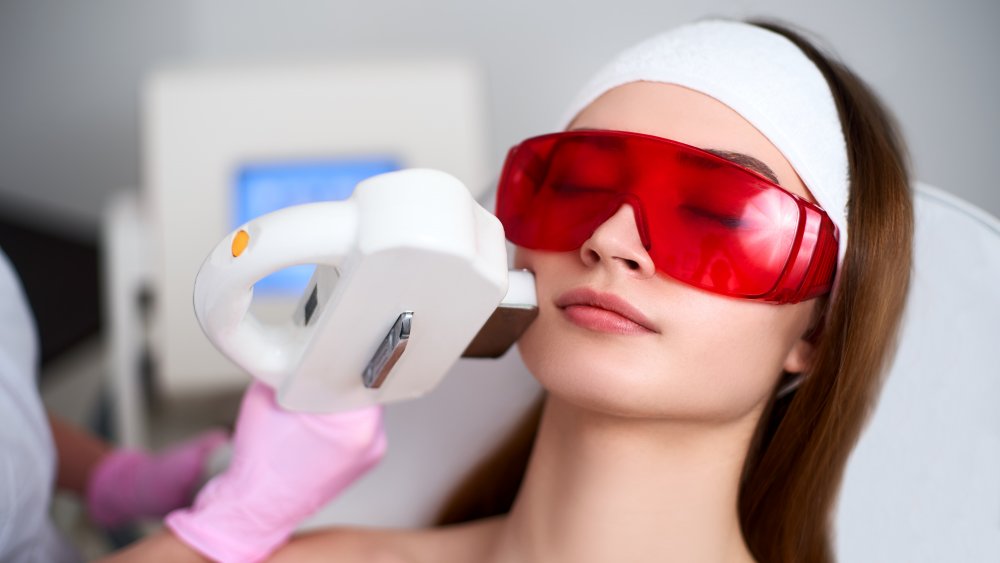Everything You Need To Know About Laser Resurfacing
Of course, we all want glowing, radiant, and dewy skin — and there are a variety of ways advertised that can help us achieve this youthful look, including facials and serums. However, there is another effective way to transform your skin that's getting a lot of buzz: laser resurfacing. So, what exactly does this procedure involve ? According to WebMD, the treatment removes layers of skin very carefully. This ensures that new skin cells form during the recovery process, which gives you tighter and younger-looking skin.
Some fear the laser can weaken their skin barrier over time, but dermatologists refute this claim. "Lasers use low-level light or heat to remove the surface level of skin with minimal damage," explained Sheetal Sapra, the director of dermatology at ICLS, to Flare. "This microscopic injury in the skin's surface stimulates the natural healing process, allowing the body to replace damaged or dead skin with new, healthy skin."
Is laser resurfacing painful?
You may be wondering if the procedure is painful. Healthline reports that your doctor will apply a topical anesthetic that will help to numb your face. Depending on how big the area is you're treating, your doctor may also prescribe a sedative or pain killers. Dr. Sapra said the level of pain a patient experiences varies case by case. "Most patients can easily tolerate the sensation of mild resurfacing, or removing the top layer of skin," she told Flare. "The deeper the resurfacing, the more sensitive the procedure becomes depending on the patient's pain tolerance."
There's also still a misconception that laser resurfacing doesn't work on all skin tones. Sapra said while this used to be true, lasers have come a long way. "In darker skin tones there is always the increased risk of pigmentation when using light-based therapies like laser skin resurfacing," Sapra said. Today the devices have been upgraded significantly and have improved methods, she explained. However, to get the best treatment, she said it's important to see a board-certified dermatologist who has access to an array of technologies and is knowledgeable about your skin type.
If you're feeling ready to try this out, you might also want to consider the cost. According to the American Society of Plastic Surgeons, this treatment can set you back from between $1,200 to nearly $2,000. Not exactly budget friendly, but the results may be worth it.

